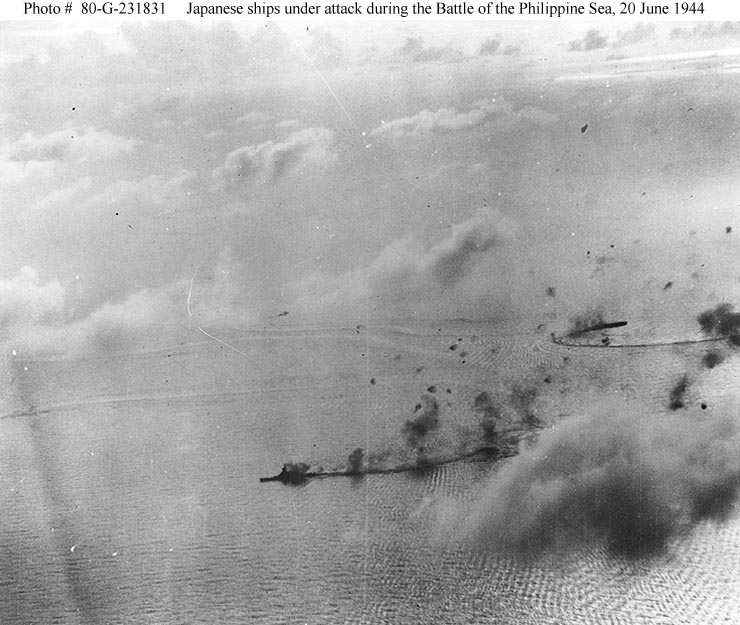« Back to Blog
USS Yorktown at the Great Marianas Turkey Shoot Part 3
Waring Hills Jun 20, 2010At 0524 on 20 June 1944, Yorktown launched search aircraft to find the Japanese fleet. The Japanese fleet wasn’t found that morning but search planes encountered and shot down several Japanese float planes, Rufes (Zeros on floats), in the northern sectors. This convinced Admiral Mitscher to change Task Force 58’s pursuit course from 260 degrees (almost West) to 320 degrees (almost Northwest), a wise decision that would pay dividends later.

Rufe floatplane
Finally at 1545 (3:45 PM) search aircraft from the Enterprise located the Japanese fleet. Quick calculations took place and Mitscher realized that it would be tight to reach the Japanese that day. Just before 1600 he notified his carrier groups, “Expect to launch everything we have. We will probably have to recover at night.” Shortly after this notification he ordered, “Launch’em.”
At 1850 (6:50 PM) in the waning daylight VB-1 and VF-1 from Yorktown found Zuikaku and drove from 12,000 feet to attack. Also attacking Zuikaku were squadrons from Hornet and Bataan. Onboard Zuikaku was Admiral Ozawa, who had shifted his flag the previous day from the sinking Taiho. Now he would be forced to shift his flag again as Zuikaku took at least one direct hit and numerous near misses.

When the American attacks finished in the setting sun, Ozawa had lost carrier Hiyo and Zuikaku was severely damaged (she would be used as bait at Leyte Gulf and sunk ), Junyo was severely damaged, Chiyoda had suffered one major hit and Ryuho was slightly damaged. Even more damaging was the 476 aircraft and 445 pilots and aircrew lost by the Imperial Japanese Navy during the battle. In Japan, Prime Minister Hideki Tojo would be forced to resign.

After the short lived attack on Ozawa’s Mobile Fleet, 209 Navy pilots began their return trip to find home. Unfortunately, 20 June was the first night of the new moon and night carrier landings was not the normal business of naval aviators. Some pilots began to get nervous and some were running out of gas looking for their ship. In Task Force 58. 1 (Hornet, Yorktown, Bataan and Belleau Wood) former Yorktown commanding officer Jocko Clark as TF 58.1 commander ordered his carriers to light their flight decks, very shortly afterwards, Mitscher sent out the signal, “Turn on the lights.” Returning pilots were soon told to land on any ship.” Of the 209 returning planes, only 150 made an arrested landing that night and half of them were on the wrong carrier.
Landing Signal Officer (LSO) Dick Tripp had a long evening and thought he had landed his last aircraft at 2300 (11 PM). Suddenly on the radio a voice came across, “This is 00. May I please land now?” The radio call came from VF-1 skipper “Smoke” Strean and LSO Tripp quickly recovered Smoke aboard (after forgetting he had been waiting to land). Yorktown pilots headed to bed and the early Plan of the Day (POD) for the next day read…”A Toast to the Japanese Fleet, Bottoms UP!”
Share:
« Previous Post
USS Yorktown at the Great Marianas Turkey Shoot Part 2
Next Post »
June Volunteer Profile - Nina Lindenberg
